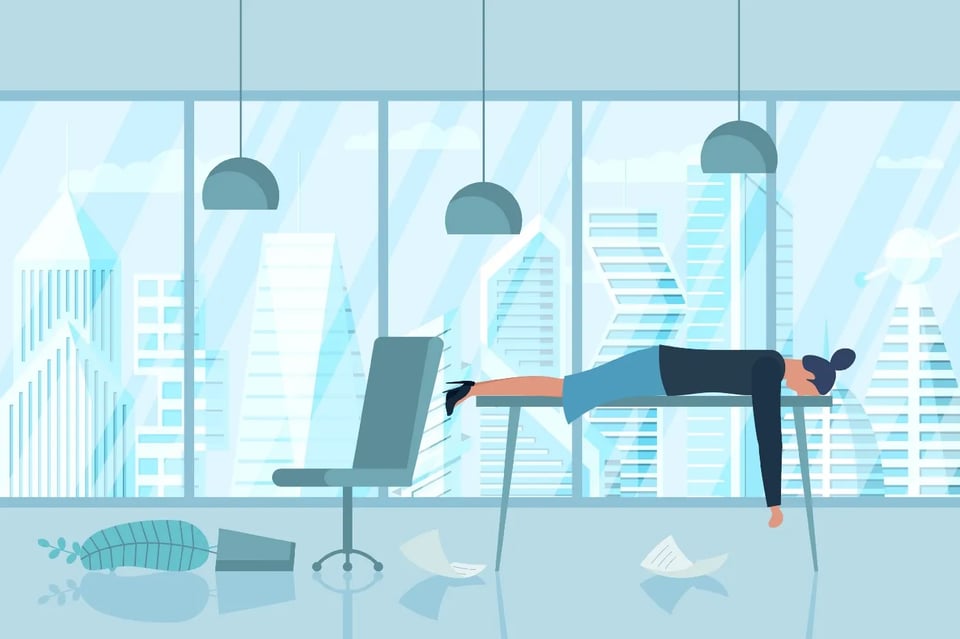Disability Burnout is Real

Disability burnout is a state of physical or emotional exhaustion caused by, or made worse by a disability. Symptoms include:
feelings of exhaustion
inability or difficulty in focusing or prioritizing
exacerbation of one’s underlying health conditions
creation of new, co-morbid health conditions (clinical depression, for example, that accompanies a physical disability)
Disability burnout can involve a sense of reduced accomplishment and can also have a seriously detrimental effect on an individual’s physical or mental health. It is an insidious condition that can happen slowly, over a long period of time. But the consequences can be life-altering, which is why it’s important to spot the signs of disability burnout early.
There are many ways disability burnout can occur. These are just a few and are not intended to be a completely exhaustive list.
Overload Burnout
With overload burnout, an “overload” of something — hinders or blocks people from achieving their definition of success. People end up working harder and frantically to achieve their goals. Overload can come from several sources, including:
Work
Personal/family drama
Health problems
Trying to hide a disability
More than 70 % of disabilities are invisible. And those individuals have the option of trying to hide their status. Many choose to, especially in countries where there is a significant stigma and lack of legal protection for people with disabilities. But, hiding a disability comes with a price.
In the article titled “Why People Hide Their Disabilities at Work”, Harvard Business Review authors Pooja Jain-Link and Julia Taylor Kennedy brilliantly summarized the burnout issue caused by “passing” with the following opening:
If you’re hiding a disability, the daily grind of early mornings, deadlines, and office politics is compounded into a far heavier burden. You live in fear of being discovered. You work overtime to mask your authentic self.
This HBR report found that people hiding their status as a person with a disability are 2X more likely to feel anxious and 4X more likely to feel isolated. This adds to the overload and may tip the burnout scales.
Financial Burnout
Being a person with a disability is ridiculously expensive, especially in the United States. We pay:
More for healthcare — I can’t remember the last time I didn’t hit my annual maximum out-of-pocket cap on my health insurance. It’s been well over 12 years at this point. That’s thousands of dollars I have to spend every year for medical expenses that a person without a disability doesn’t have to spend. The annual maximum out-of-pocket cap doesn’t include the additional expense of the many many things that people with disabilities need that health insurance may not cover. This includes chiropractic care, special diets, and out-of-network care for second opinions. This list is actually much longer than that, but you get the idea.
More for transportation — People with disabilities pay more for a) cabs or ride share, because we can’t walk easily; b) business class seats on planes because flying economy puts some people with disability’s health at risk; c) car modifications and more for gas for larger cars to carry our equipment; and d) taking their caregivers with them if they can’t travel alone.
More for utilities — Many pieces of assistive technology require electricity, and that adds up over time. Some people with disabilities require air conditioning so they don’t overheat. Others require higher heat to keep their joints mobile.
More for food — Because of rheumatoid arthritis, I am more likely to buy pre-chopped vegetables and stir-fry chicken strips over buying intact vegetables and cutting up a whole chicken. Some people with disabilities are medically required to be on special diets (such as gluten-free) by their medical providers.
Under-challenge burnout
Imagine having to choose between a “Goldilock’s Job” with just the right amount of challenge, and guaranteed healthcare. That happens more than you would think (especially in the United States) for people with disabilities. Most US states have incredibly low thresholds for income, assets or both to qualify for Medicaid. And if your condition is permanent, for a full 70 % of people with disabilities, it takes two to three years from the time of initial application for federal SSI disability payments to get approved.
I would be lying if I didn’t point out that at the back of every person with a disability’s mind is the fear of losing a good job due to a worsening health condition and then having to start the SSI process with no medical care continuity during that waiting period. Also, people with disabilities work part-time at almost double the rate of those without a disability.
These are all under-challenge burnout drivers — where people with disabilities find themselves trapped in jobs where they don’t feel appreciated, are bored, or lack learning opportunities or potential for advancement. It turns out most humans really don’t like being bored or performing monotonous tasks. And those two things create stress, which in turn can lead to burnout.
Reliance burnout
Having to ask for help all the time sucks, and reliance burnout can be the result. This results in people with disabilities feeling generally helpless, with a lack of self-confidence which can in turn trigger imposter syndrome flare-ups in the work setting. Reliance burnout can make people with disabilities believe that they are unable to keep up with the demands of their job or day-to-day living activities.
Reliance burnout is a subtle but important reminder that we have not yet as a society fully transitioned over to the social model of disability, but are rather still stuck firmly in the charity/medical models of disability. If society were fully transitioned to the social model of disability, people with disabilities wouldn’t ever have to ask for help. Other individuals would recognize that it is an inaccessible society that is responsible for the barriers, not the medical condition that a person with a disability happens to have.
Add a comment: